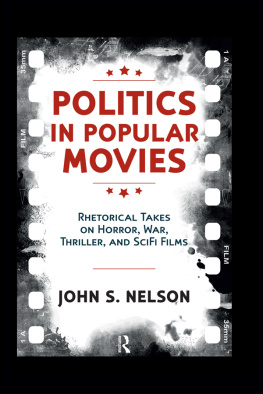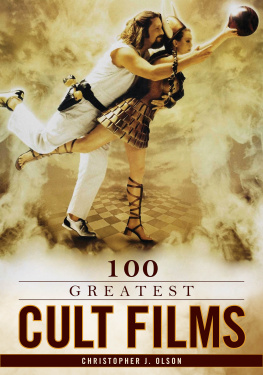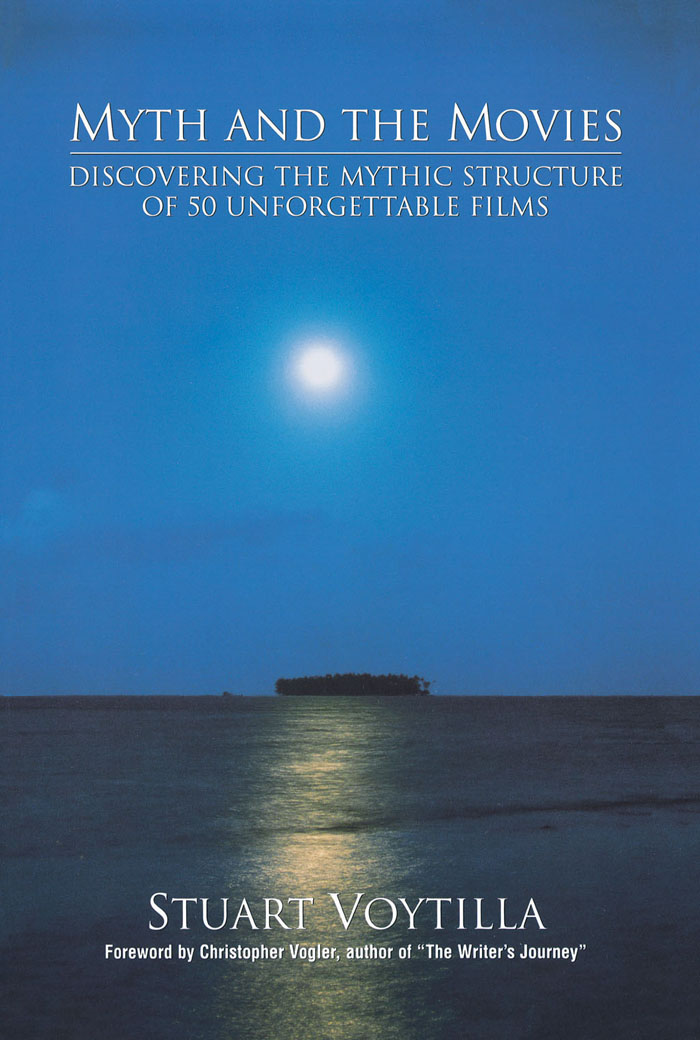Buy this book! Myth and the Movies is a tremendous asset to any screenwriter in the process of building a script or needing a fix for story and structural problems in it. I recommend it to all my clients.
Marisa DVari, author of Script Magic
and Story Consultant
Stuart Voytillas Myth and the Movies is a remarkable achievement: an ambitious, thought-provoking, and cogent analysis of the mythic underpinnings of fifty great movies. It should prove a valuable resource for film teachers, students, critics and especially screenwriters, whose challenge, as Voytilla so clearly understands, is to constantly reinvent a mythology for our times.
Ted Tally, Academy Award-winning screenwriter,
The Silence of the Lambs
Myth and the Movies is a must for every writer who wants to tell better stories. Voytilla guides his readers to a richer and deeper understanding not only of mythic structure, but also of the movies we love.
Christopher Wehner,
Web editor, The Screenwriters Utopia and
Creative Screenwriting
Ive script consulted for ten years and Ive studied every genre thoroughly. I thought I knew all their nuancesuntil I read Voytillas book. This one goes on my Recommended Reading List. A fascinating analysis of the Heros Myth for all genres.
Lou Grantt, Editor,
Hollywood Scriptwriter Magazine
Myth and the Movies is a work of remarkable depth, extraordinary research, and rare insight. Stuart Voytilla is an engaging writer who makes the film heros journey as interesting for the reader as the protagonist. It is a must-have book for students of film, industry professionals, or anyone who loves the movies.
Stephen Siegel,
Adjunct Professor of Screenwriting,
Department of Film & Television, Undergraduate
New York University
DISCOVERING THE MYTHIC STRUCTURE OF
50 UNFORGETTABLE FILMS
BY
STUART VOYTILLA
Published by Michael Wiese Productions, 12400 Ventura Blvd. #1111,
Studio City, CA 91604, (818) 379-8799 Fax (818) 986-3408.
E-mail: mw@mwp.com
www.mwp.com
Cover design by The Art Hotel
Interior layout by William Morosi
Printed by Sheridan Books, Inc.
Printed on recycled stock
Printed and Manufactured in the United States of America
Copyright 1999 by Stuart Voytilla
All rights reserved. No part of this book may be reproduced in any form or by any means without permission in writing from the author, except for the inclusion of brief quotations in a review.
Library of Congress Cataloging-in-Publication Data
Voytilla, Stuart, 1959
Myth and the Movies : discovering the mythic structure of 50 unforgettable films / Stuart Voytilla.
p. cm.
Includes bibliographical references.
ISBN 0-941188-66-3
ISBN 13 978-0-941188-66-1
1. Motion picture--History. 2. Film genres. I. Title.
PN1995.V69 1999 | 99-27626 |
791.43'6--dc21 | CIP |
TABLE OF CONTENTS
FOREWORD
B Y C HRISTOPHER V OGLER
The book you are about to read is part of a long chain of reaction and response. This chain began with the response of the earliest humans to their environment, the frightening and wondrous world that confronted them on all sides. From their awe and fascination with the mystery of the worlds grand design they forged the first mythic stories. The myths were attempts to explain, in an indirect, poetic, metaphoric way, the purpose and place of humans in the vast design. With the tools of myth, early people strove to answer the timeless questions, the questions we still have with usWho made this world, and why? Where do we come from? Where do we go when we die? What does it mean and how are we supposed to behave? How do we relate to the great forces of life and death, female and male, creation and destruction, light and darkness?
This chain of thought expanded as humans enhanced the myths to reflect the distinct conditions of our living places and our unique experiences in the land. It stretched further, link by link, as we explored mythic dimension through dance, music, drama and all the other arts. With movies, we found a medium ideal to represent the fantastic world of myth. Movies embraced myth, both for story lines and for a deeper influence in structure, motifs, and style. A new and powerful link in the mythic chain was forged.
Other links were made in our own times as scholars and philosophers looked back at the myths of the ancient world. Among students of myth like Carl Jung, Mircea Eliade, Theodore Gaster, and Heinrich Zimmer, the work of a man named Joseph Campbell has particular relevance for our quest. He hammered out a mighty link of the chain, a set of observations known as The Heros Journey.
In books like The Hero with a Thousand Faces, The Power of Myth, and The Inner Reaches of Outer Space, Campbell reported on the synthesis he found while comparing the myths and legends of many cultures. The Heros Journey was his all-embracing metaphor for the deep inner journey of transformation that heroes in every time and place seem to share, a path that leads them through great movements of separation, descent, ordeal, and return.
In reaction to Campbells work, a man named George Lucas composed what many have called a myth for our timesthe Star War series, in which young heroes of a highly technological civilization confront the same demons, trials, and wonders as the heroes of old.
And thats where I come in, trying in my humble way to add something to the chain. Back in 1977 when the first Star Wars movie appeared, I was a film student at the University of Southern California School of Cinema. I had been on my own version of the heroic quest, seeking the golden key of storytelling. I found it in the works of Campbell, and saw it verified and validated by the unprecedented success of the Campbell-inspired Star Wars movies. I continued to test and refine my understanding of the Heros Journey as I started to work for the Hollywood studios as a story analyst and consultant.
While working for the Walt Disney Company, I tried to formulate my reactions into a seven-page memo, A Practical Guide to The Hero with a Thousand Faces. This memo took on a life of its own; it was photocopied and faxed all over town. It became part of Hollywood lore. In it, I attempted to translate Campbells ideas into movie language. Where he illustrated the Heros Journey with myths from various world cultures, I gave examples from classic and current Hollywood movies.
Following Campbell, but making adjustments to reflect the unique conditions of movie storytelling, I described the Heros Journey as a twelve-stage adventure for the hero. The stages are:
1. The Ordinary World, in which the audience meets the hero, discovers his or her ambitions and limitations, and forms a bond of identification and recognition.
2. The Call to Adventure, when the hero is challenged to undertake a quest or solve some problem.
3. Refusal of the Call, when the hero hesitates or expresses fear.
4. Meeting with the Mentor, where the hero contacts some source of reassurance, experience, or wisdom.
5. Crossing the Threshold, at which time the hero commits to the adventure and enters the Special World.






